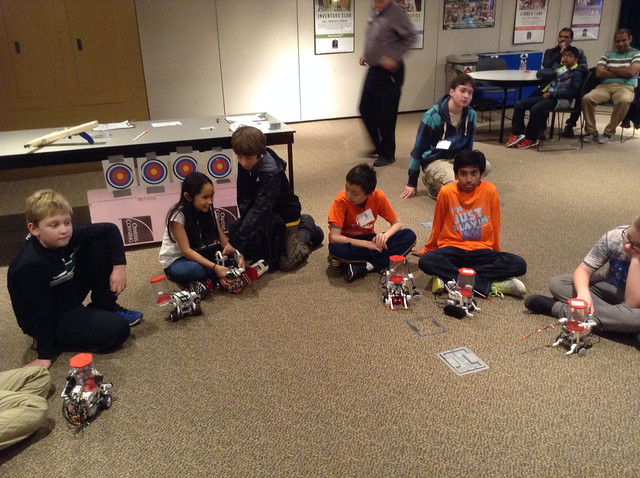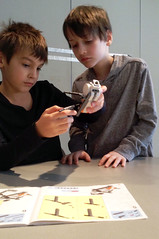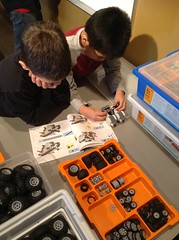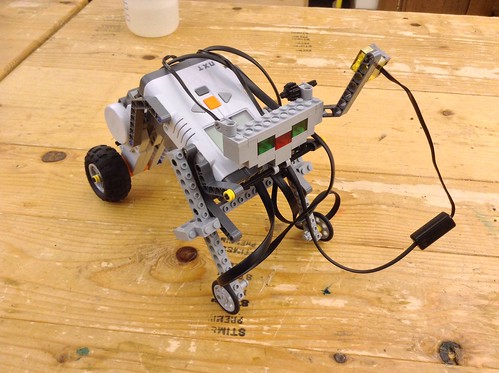The History
We reviewed what jousting was, when it took place, and how it worked. We took our inspiration from medieval jousting. The sport where two knights would charge one another on horseback with a lance (a long stick) in hand and try to strike, or better yet unseat their opponent. We wanted to see if we could recreate this sport with robots.
 (source: Baroquenz)
(source: Baroquenz)We created basic robots and learned to control them. Many of the students have either participated in this program before or had previous experience building and program robots. The robots were quickly constructed and mobile. Even for the few students who have not programmed robots before, they did a great job of diving in. Working through some of the programming tutorials in the manual proved very useful later on for our newcomers.
Each student built their own robot. Eventually alliances formed and the most battle ready robots emerged, while other bots served as back-ups or were raided for parts. Each robot had it's own personality and flare. In addition to each team building a robot, they were required to have a rider. So we used some plastic containers. Some containers served as the riders chamber while other turned into the rider.
The Journey
Once the first round of robots were constructed we found that they were not totally compatible, so we needed to establish some basic rules of jousting as they pertained to our robots. We kept our rules simple and adjusted them as the sport evolved. We ended up with essentially three rules.
- Lance on the right of the robot
- Rider on Top of the robot
- Each robot should have 2 sensors
- One to indicate if the the lance has struck another robot
- And a second to detect if the rider had been up seated.
Rule number 3 required us to think through some programming. We used the touch sensors to detect hits and track whether the rider was still seated on the robot. We figured out a couple of ways to make it work, but the most reliable way involved the nesting of some If blocks.
Practice, Practice, Practice
Once the robots were operational and operating by the same rules we had many practice bouts. While the robots did not act as intended, information was gathered. Iteration and improvement is a BIG part of the invention process. It was fun to watch the robots get refined and tweaked as we figured out what strategies and technology worked best.
Sometimes that took a couple of tries, but that is part of the fun. You know what they say... if at first you don't succeed, reposition your robots.
Some of the students came up with some excellent additions to their robots. I really like the way many of the students added lights or sounds and connected them so there was some feedback provided by the robot when it struck the target or was struck by a lance.
Tournament
 Once the robots were ready, we arranged a little tournament. In order to have a tournament we needed to be able to establish a clear victor. We decided to create a scoring system.
Once the robots were ready, we arranged a little tournament. In order to have a tournament we needed to be able to establish a clear victor. We decided to create a scoring system.3 points for a knock off, where the rider is unseated from the robot
2 points for a registered hit
1 point for a draw
Each match consisted of three bouts and the victor was determined by the total score for the match.
I was really impressed with sportsmanship and enthusiasm share by the students. Regardless of who won everyone had a good time.






















